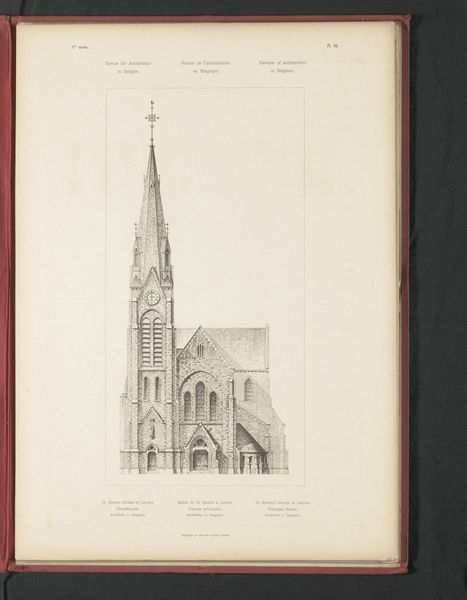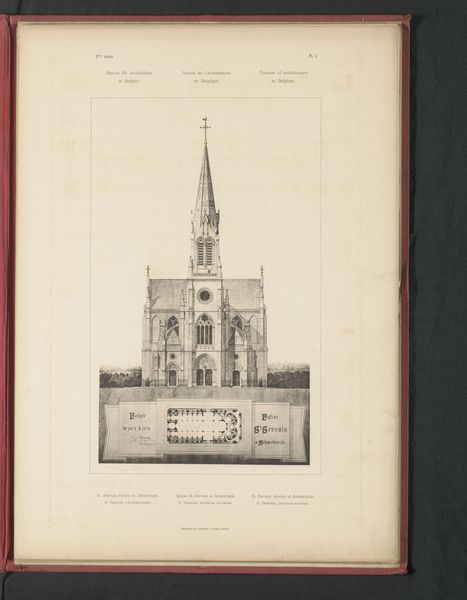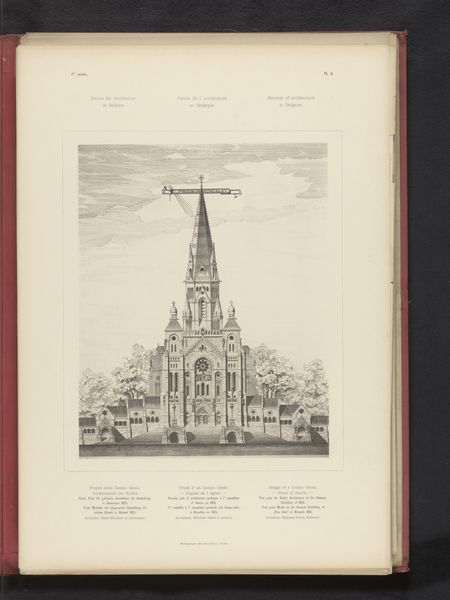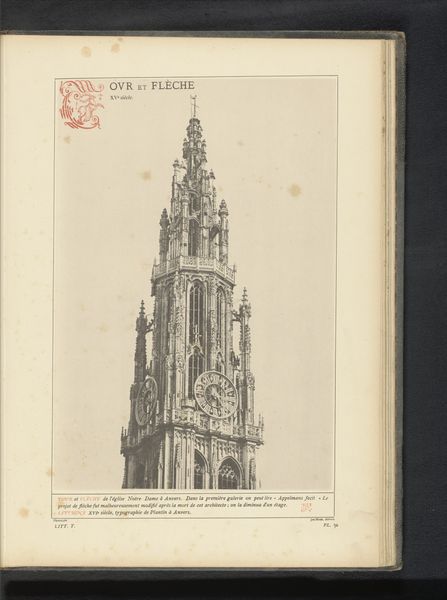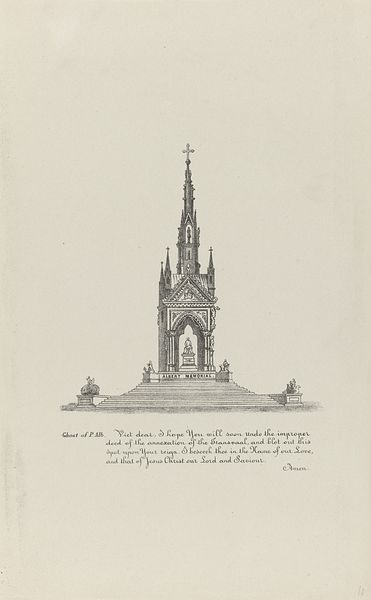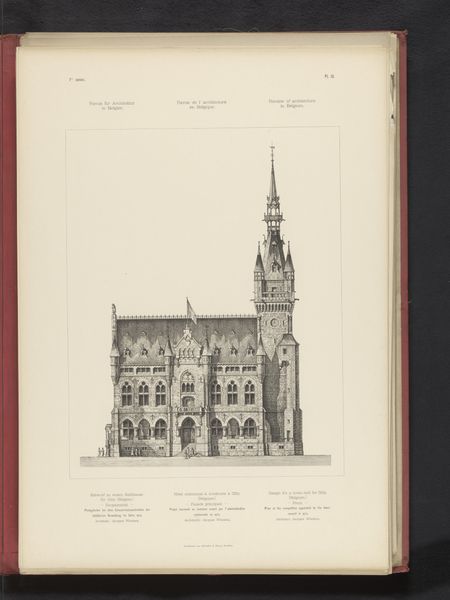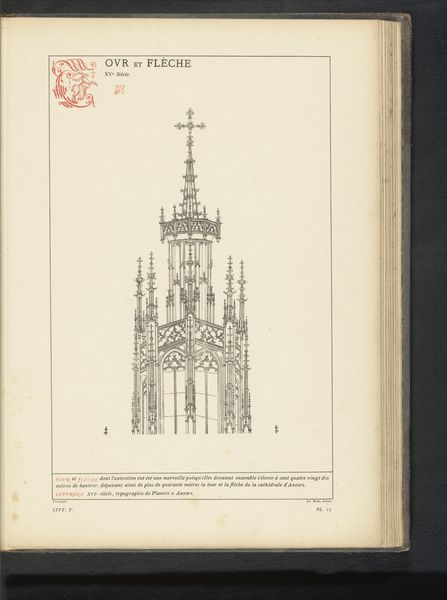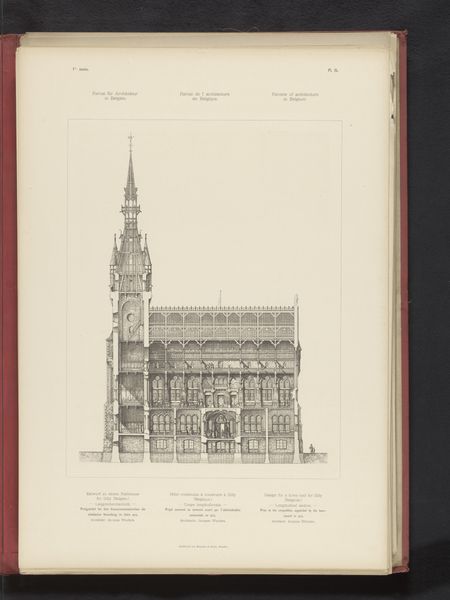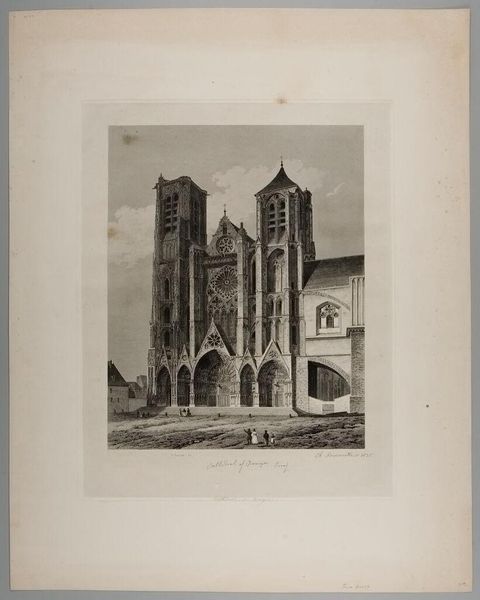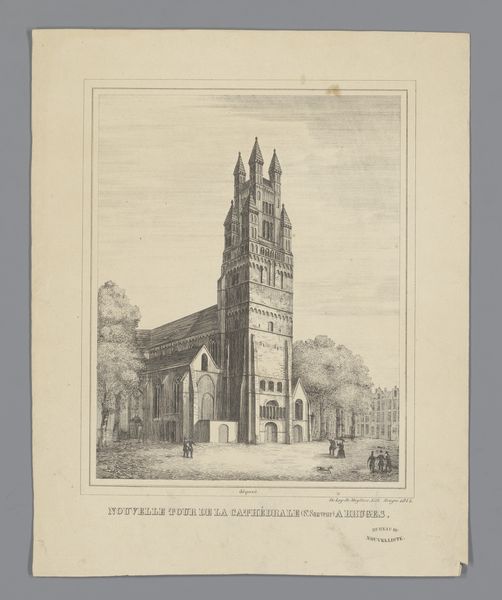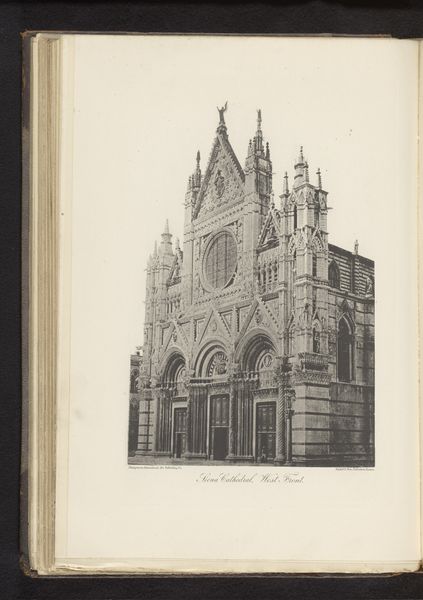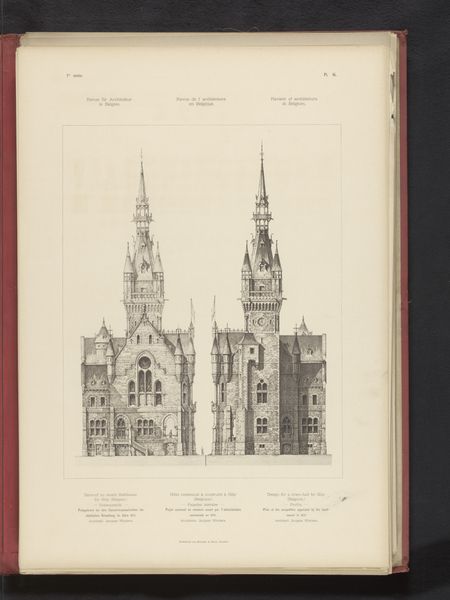
Reproductie van een ontwerp voor de restauratie van de poort en toren van de Sint-Maartenskerk in Kortrijk, door L. Degeyne before 1893
0:00
0:00
Dimensions: height 381 mm, width 232 mm
Copyright: Rijks Museum: Open Domain
Curator: Here we have a reproduction of a design by L. Degeyne, for the restoration of the gate and tower of the Sint-Maartenskerk in Kortrijk. The image dates from before 1893, rendered as a print, most likely an engraving, on paper. Editor: My first thought? Precarious. I feel like the whole structure is yearning to touch the sky, all vertical lines and sharp angles. Almost frantic in its aspiration. Curator: Well, it's Neo-Classical in style. We see that ambition reflected in civic architecture of the 19th century. Structures were designed to impress and convey the power of institutions. Editor: Institutions always want to seem permanent, don’t they? Look how the engraver's lines suggest solidity, trying to project permanence. Curator: And restoration is, in many ways, also about reinforcing power—reasserting the Church's or the city's legacy. What narratives get prioritised through such interventions? Who gets to decide which past we preserve? Editor: So true. Makes you wonder about what had crumbled, what was deemed salvageable, and what they simply chose to reinvent according to the tastes of the time. Look at the obsessive details in the tower; you sense someone striving for historical accuracy or perhaps trying to improve on history. Curator: These projects also offered an important opportunity. The role of the architect or designer then becomes central as they act as the public figure responsible for preserving a shared past and civic space. Editor: A kind of myth-making, isn't it? But gazing at this print, it prompts so many questions: What did the church *really* look like before? What did the community *feel* about it changing? Curator: Precisely. It's a visual document but also a political one, illustrating the dynamic interplay of history, design, and power. Editor: Well, for me, I see that hopeful, slightly desperate, climb towards something eternal—even if it’s etched in ink on paper. Curator: And for me, this piece reflects the constant dialogue between past, present, and the stories we choose to tell.
Comments
No comments
Be the first to comment and join the conversation on the ultimate creative platform.
